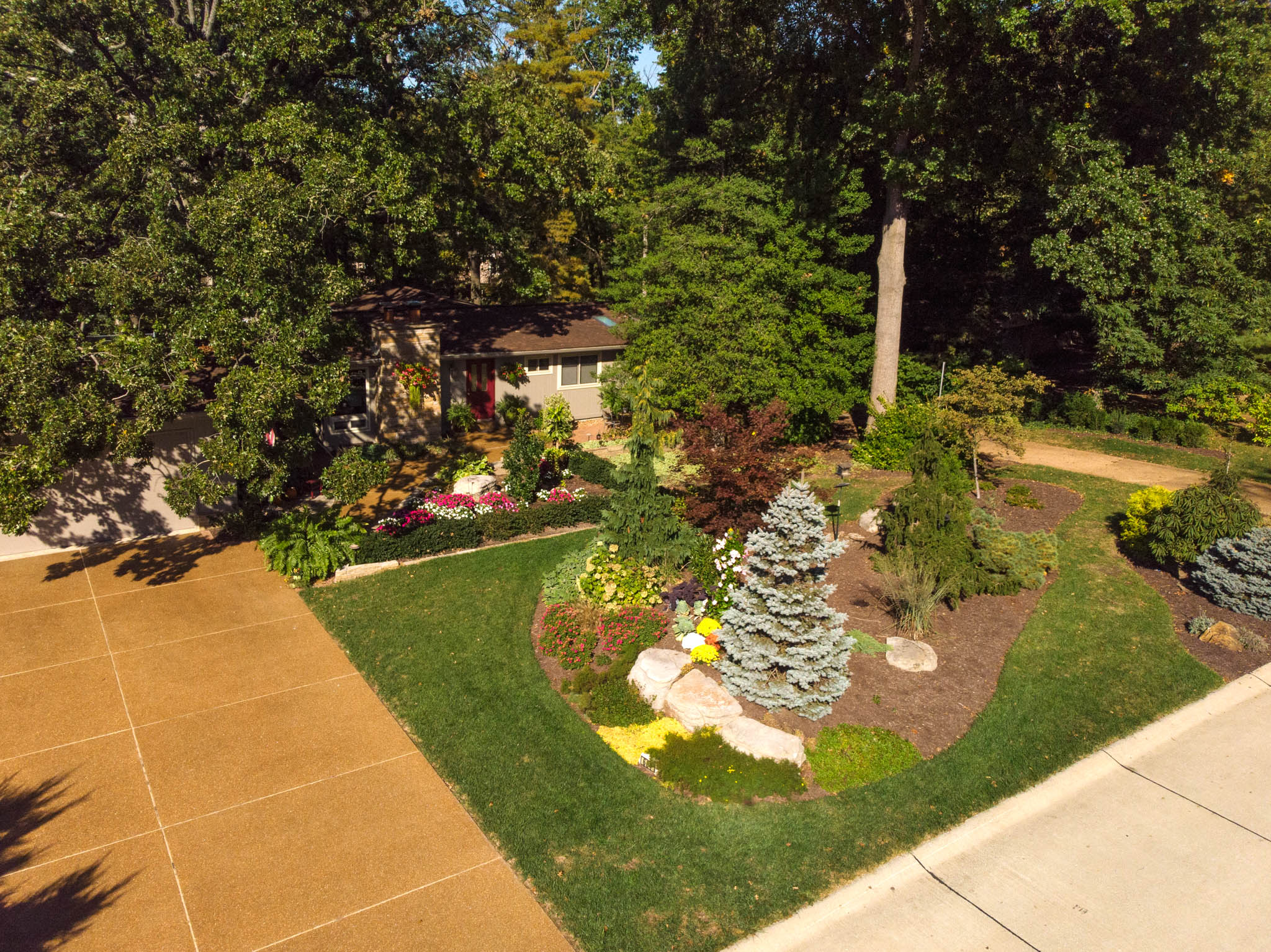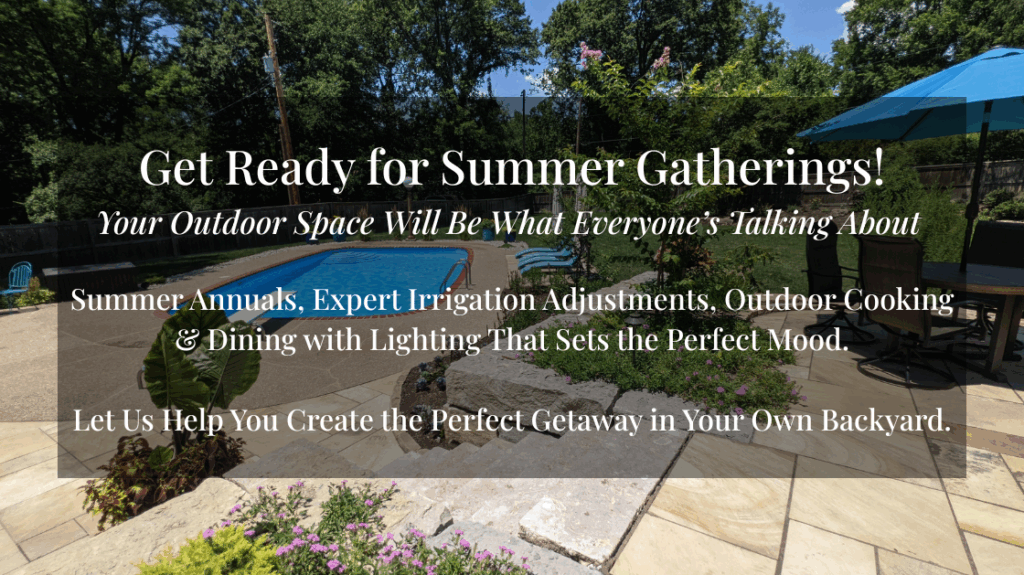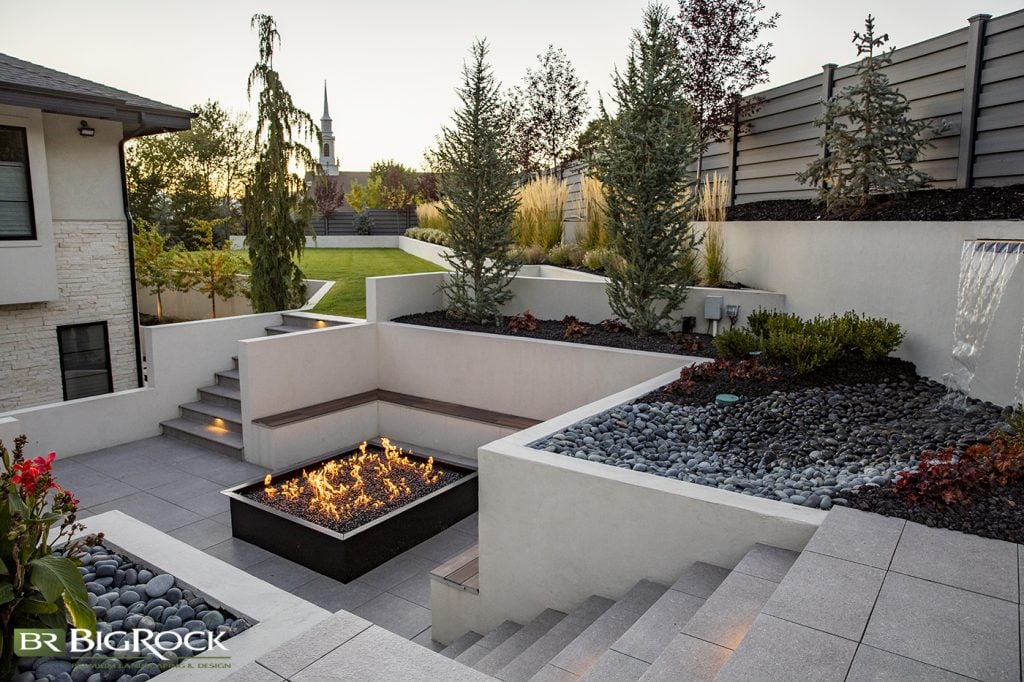Choosing the Right Components for a Long-Lasting BBQ Island Installation
Discovering Various Types of Landscaping to Boost Your Outdoor Atmosphere
Landscape design plays an important function in defining outside areas. Different styles, from standard yards to modern-day minimal layouts, use distinct advantages for boosting aesthetics and feature. Integrating aspects like xeriscaping and indigenous plants can add to environmental equilibrium. Understanding the interaction of hardscape and softscape is necessary for producing welcoming environments. The selections offered can be overwhelming, motivating one to review which design best straightens with their vision for an outdoor shelter.
Traditional Garden Landscaping

While several contemporary yards accept minimalism and native growings, standard yard landscape design continues to be a cherished technique that stresses proportion, structure, and ornamental features. This design frequently includes formal geometric formats, where flowerbeds, bushes, and paths are organized with precision. Central focal points, such as water fountains or sculptures, attract the eye and give a sense of harmony.Traditional landscape design frequently includes a selection of plant kinds, showcasing seasonal blooms and evergreen elements. Timeless hedges, perennials, and annuals produce dynamic shades and appearances throughout the year. Additionally, pergolas, trellises, and arcs include vertical passion and work as support for climbing up plants, enhancing the general aesthetic.The use of all-natural materials, such as rock and wood, additional enriches the conventional landscape, adding to a classic high quality. Ultimately, this design welcomes leisure and satisfaction, making it a beloved choice for those seeking a stunning outdoor atmosphere.
Modern Minimalist Landscaping
Modern minimal landscape design emphasizes simpleness and performance, identified by clean lines and open rooms. Secret features consist of a restricted plant combination and thoughtful hardscape design that focuses on functionality and aesthetic allure. Reliable plant choice methods better enhance the minimalist approach, producing relaxing exterior environments that encourage relaxation and reflection.
Secret Attributes of Minimalism
An expanding trend in landscape design is the welcome of minimalism, defined by simplicity and functionality. Minimalist landscaping concentrates on tidy lines, open spaces, and a limited color palette, advertising a sense of harmony. Components are very carefully curated to stay clear of mess, enabling each element to stand out. The use of natural materials, such as rock and wood, boosts the natural feel while maintaining a visual equilibrium. In addition, minimal designs often include geometric forms, which can create aesthetic rate of interest without overwhelming the detects. Water attributes may be consisted of, acting as focal points that enhance serenity. On the whole, minimalism in landscape design emphasizes the appeal of restriction, permitting nature's intrinsic top qualities to shine through in an unified outside atmosphere.
Plant Option Techniques
Effective plant choice is necessary for achieving the preferred visual in modern-day minimalist landscape design. The emphasis ought to get on simplicity, making use of a restricted scheme of plants that enhance each various other and the surrounding setting. Indigenous plants are frequently optimal, as they need much less upkeep and water, advertising sustainability. Picking varieties with differing heights and appearances can include visual rate of interest without overwhelming the area. Grouping plants in collections instead of scattering them enhances cohesion and strengthens the minimalist style. Evergreen varieties can offer year-round framework, while seasonal blossoms present refined color modifications. Inevitably, the goal is to create a serene outside area that symbolizes serenity and harmony via thoughtful plant choices.
Hardscape Design Principles
Crucial aspects in hardscape design substantially add to the general aesthetics and functionality of minimalist landscaping. This layout strategy stresses clean lines and downplayed products, producing a clean aesthetic experience. Trick parts include pathways, patio areas, and maintaining walls, which not only define rooms yet also enhance ease of access and use. The usage of materials such as concrete, rock, and wood is common, reflecting a natural yet modern visual. Including symmetrical layouts and geometric forms further reinforces the minimal philosophy, permitting a harmonious mix with surrounding plant. Additionally, correct drainage and erosion control are vital factors to consider, guaranteeing longevity and sustainability. Eventually, effective hardscape style acts as a foundation that complements softscape elements while maintaining balance and simpleness in outdoor settings.
Cottage-Style Landscaping
Cottage-style landscaping provides a wonderful approach to producing inviting outside areas. By integrating charming plant mixes, this style cultivates a sense of warmth and whimsy. The focus on cozy, distinct areas motivates relaxation and pleasure of nature.
Lovely Plant Mixes
Many house owners look for to produce a picturesque outside space, accomplishing the beauty of cottage-style landscaping commonly pivots on thoughtful plant combinations. Vivid blossoms, rich foliage, and fragrant natural herbs can be skillfully combined to stimulate a sense of whimsy and fond memories. For example, incorporating lavender, sissies, and foxgloves produces a colorful tapestry that draws in pollinators while providing a wonderful fragrance. Including ornamental turfs like miscanthus can include appearance and movement, matching the softer blossoms. Furthermore, mixing seasonal and yearly plants warranties continuous color throughout the seasons. The use of climbers, such as clematis or honeysuckle, can boost vertical interest. Generally, these combinations not only enhance the landscape however also promote a captivating and welcoming atmosphere.

Cozy Exterior Spaces
Developing relaxing exterior areas calls for a careful blend of comfort and beauty, complementing the vivid plant combinations located in cottage-style landscaping - Retaining Wall Installation. These areas often feature inviting seating arrangements, such as weather-beaten wooden benches or cushioned chairs surrounded by rich plant. Soft illumination, like fairy lights or lights, adds warmth, changing the room right into a peaceful retreat. Including aspects such as trellises adorned with climbing roses or aromatic herbs boosts sensory experiences. Additionally, pathways made from rustic stones invite exploration and connection with nature. Ornamental touches like birdbaths or whimsical yard art add to a feeling of whimsy. Ultimately, the goal is to create an enchanting environment that urges leisure and pleasure of the beauty surrounding these comfy outdoor sanctuaries
Xeriscaping for Water Conservation
How can communities stabilize aesthetic landscaping with journalism need for water preservation? Xeriscaping arises as a sensible option, advertising lasting methods that lessen water usage while improving outdoor charm. This landscape design technique focuses on utilizing drought-resistant plants belonging to the region, which require substantially much less water than conventional yards. By including mulch and reliable irrigation systems, xeriscaping decreases dissipation and runoff, additional conserving precious water resources.Communities can develop visually appealing landscapes through careful planning, selecting a diverse selection of textures and colors that grow in arid conditions. In addition, xeriscaping urges making use of ornamental rocks and decorative gravel, supplying useful and attractive options to turf yards. As communities embrace this environment-friendly strategy, they not only decrease their water consumption yet likewise advertise biodiversity and resilience in their local ecological communities. Ultimately, xeriscaping functions as a presentation of the harmony between visual allure and ecological duty.
Hardscape Design Components
Hardscape style components play a necessary function in improving exterior spaces by supplying framework and functionality. These non-plant features, such as outdoor patios, wall surfaces, sidewalks, and decks, develop visual interest while offering functional purposes. Utilizing products like brick, concrete, and stone, hardscaping adds to the general visual allure and resilience of a landscape.Incorporating hardscape components can define areas within a yard, leading movement and urging social interaction. A well-placed path can link different areas of the garden, while keeping wall surfaces can take care of altitude changes and avoid erosion.Furthermore, hardscape layout can enhance access and safety, providing secure surface areas for relaxing or strolling. Efficient combination of hardscape parts complements soft landscaping, guaranteeing a balanced exterior atmosphere. Ultimately, thoughtful hardscape style enhances not just the appeal of exterior spaces however additionally their use, making them extra welcoming and useful for property owners and site visitors alike.
Exterior Living Rooms
While exterior home offer a seamless mix of comfort and nature, they serve as necessary expansions of a home, improving lifestyle and leisure. These areas can consist of outdoor patios, decks, or outside cooking areas, designed to promote relaxation and enjoyment. Grill Islands. By incorporating useful furnishings and fashionable style, homeowners create welcoming ambiences for events or silent evenings.The combination of color frameworks, such as pergolas or awnings, protects versus the components while preserving an open feel. Fire pits and exterior heating systems prolong use into cooler dig this months, providing heat and ambiance. In addition, incorporating lights features boosts the area's usability after sundown, producing an enchanting night atmosphere.Landscaping elements, such as borders and pathways, even more specify these locations, leading activity and adding visual charm. Eventually, outside living areas transform backyards right into versatile resorts, promoting a way of living that accepts both nature and comfort
Native Plant Landscape Design
Indigenous plant landscaping stresses using aboriginal vegetation to develop harmonious and sustainable outdoor atmospheres. This approach not just improves biodiversity yet also preserves water and decreases the requirement for chemical plant foods and pesticides. By picking plants that are indigenous to a details region, house owners can assure that look at this site their landscapes are well-adapted to local soil and environment conditions, leading to reduced upkeep requirements.Additionally, native plants give crucial habitats for regional wild animals, including bees, butterflies, and birds, advertising eco-friendly wellness. Landscape designs that integrate these plants typically feature naturalistic layouts that mimic regional ecological communities, fostering a local color and link to the environment.Furthermore, indigenous plant landscaping can add to dirt stability and disintegration control, making it an ecologically responsible choice. On the whole, this method not only enhances exterior spaces yet additionally supports the regional environment, producing a lasting equilibrium in between human activity and nature.

Regularly Asked Concerns
Just How Can I Select the Right Landscape Design Design for My Home?
Selecting the ideal landscape design design for a home includes examining the residential property's design, climate, and personal preferences. Bbq Island Installation. Investigating numerous designs and getting in touch with experts can supply guidance to develop a harmonious outside area customized to individual requirements
What Is the Typical Cost of Professional Landscaping Solutions?
The typical price of specialist landscape design solutions normally ranges from $1,000 to $5,000, depending on project place, intricacy, and dimension. Property owners ought to think about obtaining several quotes to guarantee they receive fair pricing and top quality service.
Just how Frequently Should I Preserve My Designed Backyard?
The regularity of keeping a designed lawn usually depends upon the attributes and plants existing. Generally, regular maintenance every couple of weeks is encouraged, with seasonal jobs boosting in regularity during top growing seasons for perfect wellness and aesthetics.
Exist Landscaping Options for Small Urban Spaces?

Various landscape design options exist for little metropolitan areas, consisting of upright gardens, container plants, and roof yards. Integrating these aspects can maximize limited areas while supplying plant, enhancing appearances, and enhancing air quality in city environments.
What Plants Are Best for Drawing In Local Wildlife?
The most effective plants for attracting regional wild animals include indigenous blooming types, berry-producing shrubs, and diverse lawns. These plants provide essential food and habitat, cultivating a thriving ecological community that supports different birds, insects, and small creatures. Many property owners seek to develop a stunning exterior space, accomplishing the appeal of cottage-style landscape design usually pivots on thoughtful plant combinations. Developing comfortable outdoor spaces needs a mindful blend of comfort and beauty, enhancing the vibrant plant mixes located in cottage-style landscape design. Native plant landscape design stresses the use of indigenous plants to develop sustainable and harmonious outside settings. Landscape develops that integrate these plants typically feature naturalistic formats that mimic local ecological communities, cultivating a sense of area and link to the environment.Furthermore, native plant landscape design can contribute to soil stability and erosion control, making it an eco accountable option. Different landscaping options exist for small metropolitan spaces, consisting of vertical yards, go to website container plants, and roof gardens.